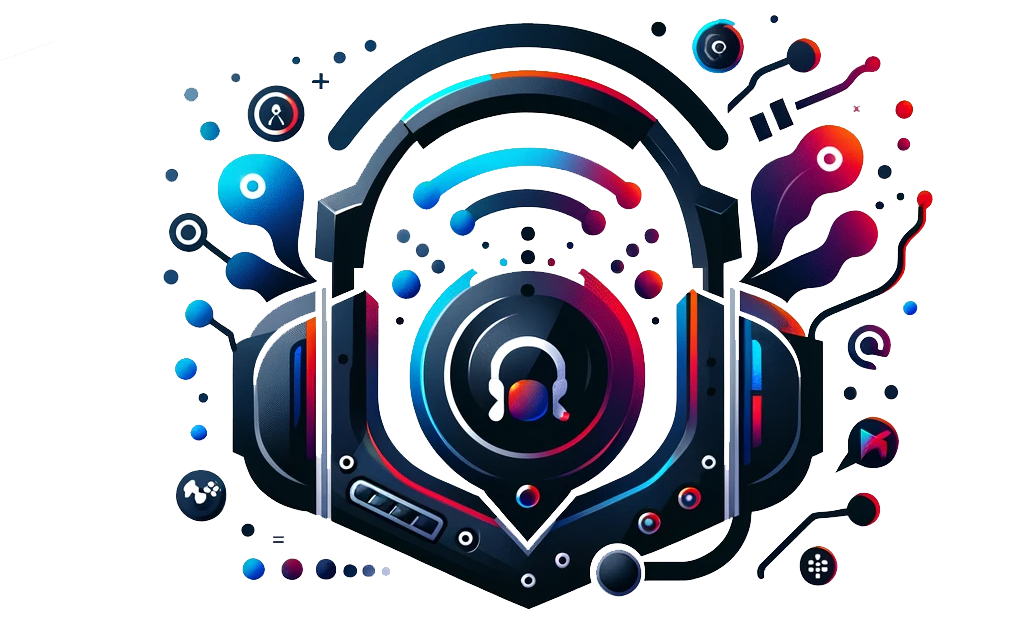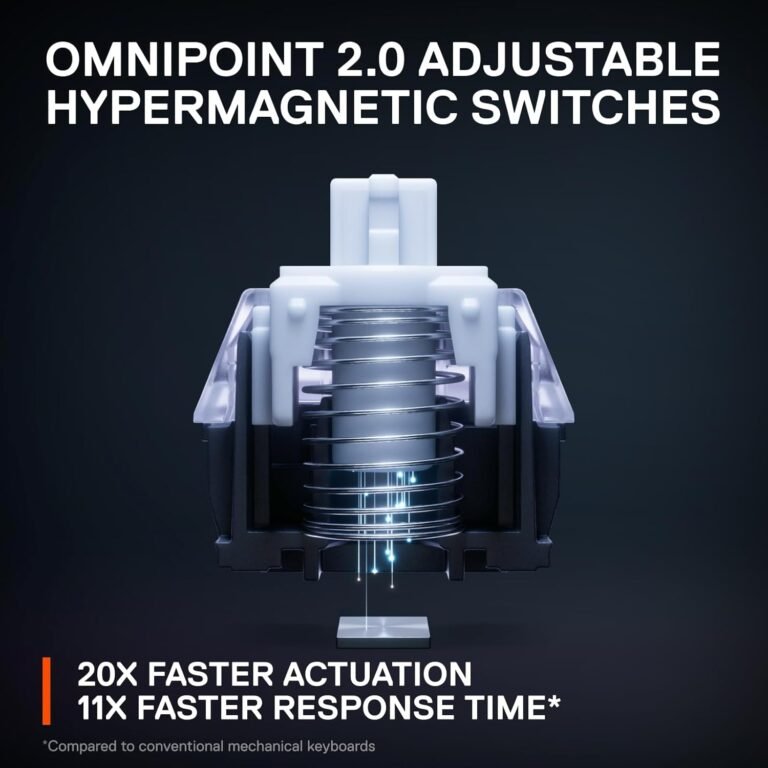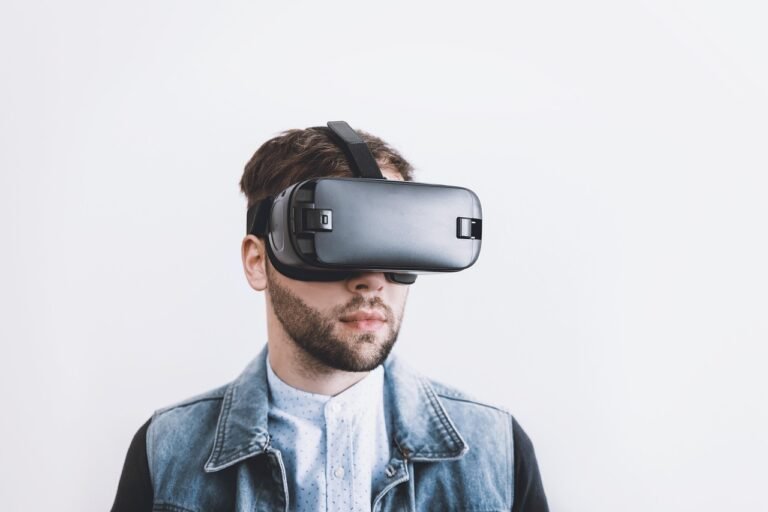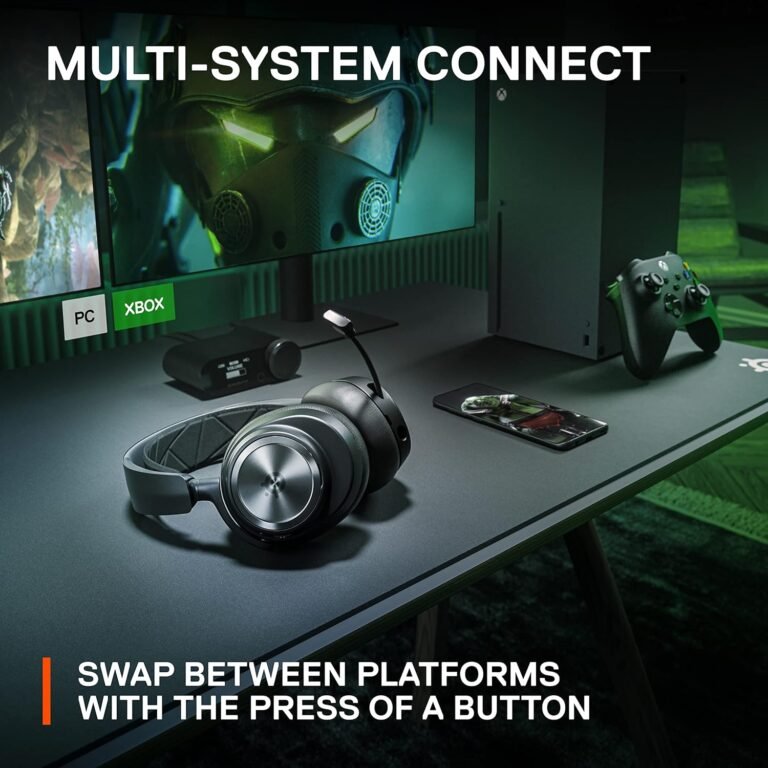Today, we’ll take a closer look at the world of headsets and uncover the key differences between open-back and closed-back designs. If you’ve ever wondered why some headsets deliver a more immersive sound experience while others prioritize noise isolation, then this article is for you. Whether you’re a gamer, a music enthusiast, or simply someone seeking the perfect pair of headphones, understanding the distinction between open-back and closed-back headsets will help you make an informed decision that suits your audio needs. So, let’s dive into the world of headsets and discover the magic behind these two distinctly different designs.
Overview
Definition of open-back and closed-back headsets
Open-back headsets are headphones that have ear cups with open vents or perforations on the back. These vents allow air to flow through and sound to escape, giving an open and spacious soundstage. On the other hand, closed-back headsets have sealed ear cups, which prevent sound from escaping and isolate the listener from external noise.
Importance of understanding the distinction
Understanding the distinction between open-back and closed-back headsets is crucial because it directly affects the listening experience. Each type has its own set of advantages and disadvantages, and choosing the right one for your specific needs and usage scenarios can greatly enhance your overall enjoyment and satisfaction.
Open-Back Headsets
Explanation of open-back design
Open-back headsets are designed with intentional openings or vents on the back of the ear cups. These openings allow air to pass through, resulting in a more natural and spacious sound reproduction. These headsets do not isolate the listener from external noise, hence the term “open-back.”
Advantages of open-back headsets
One of the significant advantages of open-back headsets is their ability to recreate a more accurate and realistic soundstage. Due to the open design, sound waves from the drivers interact with the surrounding environment, creating a sense of depth and space. This makes open-back headsets highly preferred by audiophiles and professionals who value precise audio reproduction.
Open-back headsets also tend to have a more natural and balanced sound signature. The lack of isolation allows for better airflow, resulting in less resonance and distortion. This allows for a more detailed and nuanced listening experience, particularly in the mid and high-frequency ranges.
Disadvantages of open-back headsets
One major drawback of open-back headsets is the lack of noise isolation. The open design allows external sounds to enter and mix with the audio being played, which can be distracting in noisy environments or when privacy is desired. Additionally, sound leakage is a common issue. Since the sound is not contained within the ear cups, people around you might be able to hear what you’re listening to, which can be bothersome in quiet settings or public spaces.

Closed-Back Headsets
Explanation of closed-back design
Closed-back headsets are designed with sealed ear cups, which prevent sound from escaping and isolate the listener from external noise. The back of the ear cups is typically made of a solid material, such as plastic or metal, which effectively blocks out outside sounds.
Advantages of closed-back headsets
One of the primary advantages of closed-back headsets is their excellent noise isolation. The sealed design blocks out external sounds, allowing you to fully immerse yourself in your audio without interruptions. This makes closed-back headsets ideal for use in noisy environments, such as offices, public transportation, or urban areas.
Closed-back headsets also tend to have stronger bass response compared to open-back counterparts. The sealed ear cups prevent bass frequencies from escaping, resulting in a more impactful and immersive low-end experience. This makes closed-back headsets favored by bass lovers and gamers who enjoy deep rumbling effects.
Disadvantages of closed-back headsets
One significant disadvantage of closed-back headsets is their limited soundstage. The enclosed design restricts the flow of air, leading to a more confined and intimate sound reproduction. While this can be desirable for certain genres like electronic or hip-hop, it may not provide the same spaciousness and accuracy as open-back headsets for genres that require a wide soundstage, such as classical or orchestral music.
The closed design can also cause heat buildup during extended listening sessions. The lack of ventilation in the ear cups may result in discomfort or sweaty ears, especially in warmer climates or during intense gaming sessions.
Sound Quality
Difference in sound reproduction
The main difference in sound reproduction between open-back and closed-back headsets lies in the overall presentation and spatial characteristics. Open-back headsets offer a more natural and expansive soundstage, where sounds are perceived to come from different directions and distances. This creates a sense of depth and realism, making the listening experience more immersive and engaging.
In contrast, closed-back headsets provide a more intimate and focused sound experience. The sound is directed straight into the listener’s ears, resulting in a more direct and immediate sonic impact. This can be advantageous for genres that rely on a punchy and upfront sound, such as rock, pop, or gaming.
Effect on bass response
Open-back headsets typically have a leaner and more accurate bass response. The lack of air pressure buildup in the ear cups allows for a cleaner and tighter low-end representation. Bass notes are more controlled and well-defined, which can be desirable for audiophiles and music enthusiasts seeking accuracy and precision.
On the other hand, closed-back headsets often have a more pronounced and impactful bass. The sealed design traps the low-frequency energy within the ear cups, resulting in a more exaggerated and boomy bass response. This can enhance the immersive feeling during gaming or bass-heavy music genres, where a strong low-end presence is desired.
Sound leakage and isolation
One of the trade-offs between open-back and closed-back headsets is sound leakage and isolation. Open-back headsets have significant sound leakage, meaning that people around you can hear what you’re listening to, especially at higher volumes. This can be problematic in quiet environments or when using the headsets in public spaces.
Closed-back headsets, on the other hand, offer excellent noise isolation. The sealed design prevents sound from escaping, allowing you to listen without disturbing others. This makes closed-back headsets suitable for situations where privacy or concentration is important, such as in an office or library.

Usage Scenarios
Best use cases for open-back headsets
Open-back headsets are most suitable for critical listening or situations where accuracy and detailed sound reproduction are essential. They excel in scenarios such as:
- Audiophile listening sessions: Open-back headsets allow for an immersive and accurate representation of recorded music, making them ideal for audiophiles seeking a natural and balanced sound signature.
- Studio monitoring: Many professionals, including music producers and sound engineers, prefer open-back headsets for their ability to provide accurate audio monitoring during recording, mixing, and mastering processes.
- Home listening: When you want to enjoy your favorite music or watch movies in a quiet environment without disturbing others, open-back headsets can provide an excellent listening experience.
Best use cases for closed-back headsets
Closed-back headsets are versatile and suitable for various usage scenarios that require noise isolation and an impactful sound experience. They are particularly useful in:
- Gaming: Closed-back headsets are popular among gamers due to their immersive sound and excellent noise isolation, allowing for better focus and in-game communication.
- Commuting and travel: Closed-back headsets effectively block out external noise, making them ideal for use in noisy environments like public transportation or airplanes.
- Office or work environments: When you need to concentrate on your tasks without distractions, closed-back headsets can help you create a private and immersive listening experience.
Considerations for gaming, music, and studio purposes
For gaming purposes, both open-back and closed-back headsets have their advantages. Open-back headsets can provide a wider soundstage, allowing for better positional audio and a more immersive gaming experience. However, closed-back headsets excel in noise isolation, which can be crucial when playing in noisy environments or during competitive gaming where communication is essential.
When it comes to music production and studio purposes, open-back headsets are often preferred for their accurate sound reproduction. They provide a more transparent monitoring experience, allowing for better judgment of audio quality during recording, editing, and mixing. Closed-back headsets, on the other hand, can still serve as reliable monitoring tools, especially for tracking or when a higher level of isolation is necessary.
Comfort and Durability
Comfort levels of open-back headsets
Open-back headsets often prioritize comfort, as they are designed for longer listening sessions and critical listening purposes. Their open design allows for better airflow, reducing heat buildup and potential discomfort. The ear cups are typically spacious and well-padded, ensuring a comfortable fit even during extended periods of use. However, due to the lack of isolation, they may not be suitable in noisy or crowded environments where external sounds can be distracting.
Comfort levels of closed-back headsets
Closed-back headsets also prioritize comfort, as they are often used in various daily scenarios where durability and practicality are essential. The sealed ear cups provide a snug fit, which can enhance passive noise isolation and make the listening experience more immersive. However, closed-back headsets may cause more heat buildup, particularly during extended use, due to the lack of ventilation. It’s important to consider the climate and environment in which you intend to use them to ensure maximum comfort.
Durability and build quality differences
In terms of durability and build quality, there is no strict rule that applies to all open-back or closed-back headsets. The durability of a headset depends on various factors, including the materials used, construction quality, and brand reputation. However, closed-back headsets tend to have a more robust and practical design, as they are often intended for daily use and portability. Open-back headsets may prioritize aesthetic appeal and precision engineering, but may be less suitable for rough handling or outdoor use.

Design and Aesthetics
Distinct design features of open-back headsets
Open-back headsets often display a more sophisticated and refined design, showcasing the intricate details of the internal components. The ear cups usually have a mesh or perforated back, revealing the drivers inside. They may feature premium materials like wood or metal, adding a touch of elegance and luxury. Open-back headsets are often sought after by individuals who value not only superior sound quality but also an aesthetically pleasing and unique design.
Distinct design features of closed-back headsets
Closed-back headsets prioritize practicality and functionality in their design. The ear cups are typically solid and sealed, ensuring maximum noise isolation and preventing sound leakage. They often feature a compact and foldable design, making them more portable and easy to carry. Closed-back headsets may also come in a variety of colors and finishes, allowing for personal style expression and customization.
Personal style and preferences
Design and aesthetics play a significant role in headphone selection for many individuals. Some may prefer the sleek and minimalistic appearance of closed-back headsets, while others may be drawn to the intricate and unique design of open-back headsets. Ultimately, personal style and aesthetic preferences should be considered alongside other factors such as sound quality, comfort, and usage scenarios when choosing the right headset for your needs.
Price Range
Price variations of open-back headsets
Open-back headsets can vary widely in price depending on the brand, build quality, and additional features. Entry-level open-back headsets can start from around $50, offering decent sound quality and comfort. Mid-range options typically range from $100 to $300, providing a balance between performance and affordability. High-end open-back headsets can go well beyond $500, offering exceptional sound quality, premium materials, and luxurious craftsmanship.
Price variations of closed-back headsets
Similarly, closed-back headsets come in a wide range of prices to suit different budgets and requirements. Basic closed-back headsets can be found for as low as $20 to $50, providing a decent audio experience for casual use. Mid-range closed-back headsets often range from $80 to $200, offering better sound quality and durability. High-end closed-back headsets can reach prices of $300 or more, aiming for audiophile-grade performance, superior build quality, and advanced features.
Value for money considerations
When considering the price of a headset, it’s important to assess the overall value for money. While high-end options may offer superior sound quality and premium materials, their benefits may not be fully realized unless you have a finely tuned ear or require professional-level accuracy. For casual listeners or those on a tighter budget, mid-range or entry-level options can provide excellent performance at a more affordable price point.
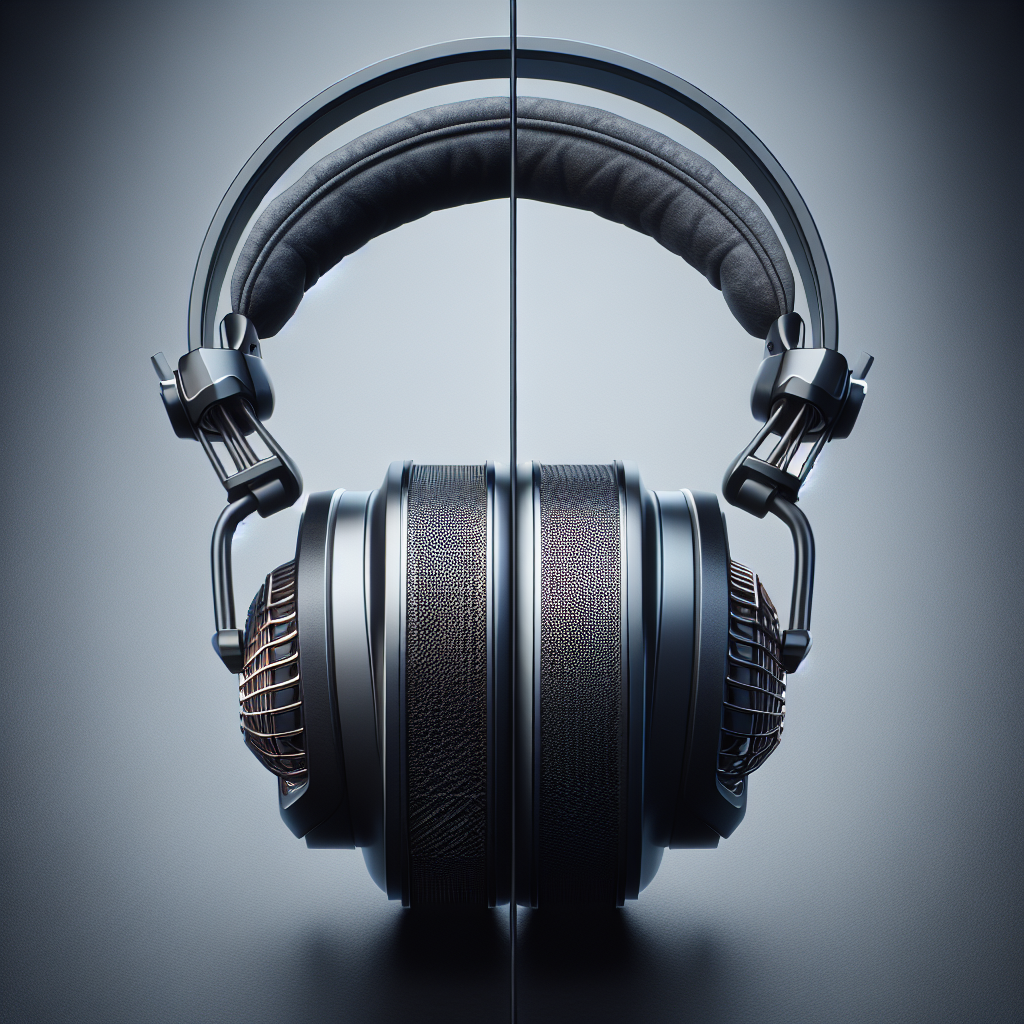
Compatibility
Compatibility with different devices
Most open-back and closed-back headsets are designed to be compatible with a wide range of devices, including smartphones, tablets, laptops, and gaming consoles. They often come with standard audio connectors, such as 3.5mm jacks or USB connections, that can be easily plugged into these devices. It’s important to check the compatibility specifications of the headset and ensure that it is supported by your intended device.
Amplification requirements
Some open-back and closed-back headsets may benefit from an external headphone amplifier to unlock their full potential. These amplifiers can provide additional power and better control over the audio output, resulting in improved sound quality and dynamics. It’s worth noting that not all headsets require amplification, and many can be driven adequately by the headphone output of most devices.
Wireless and wired options
Both open-back and closed-back headsets come in both wireless and wired options. Wireless headsets provide the convenience of mobility and freedom from tangled wires, allowing you to move around more freely. Wired headsets, on the other hand, often offer better sound quality and more reliable connections. The choice between wireless and wired depends on personal preference, intended usage scenarios, and the importance of audio fidelity.
Conclusion
Wrap-up of key differences
In conclusion, the distinction between open-back and closed-back headsets lies in their design, sound characteristics, isolation capabilities, comfort levels, and price range. Open-back headsets offer a more natural and accurate sound reproduction with a wider soundstage, while closed-back headsets prioritize noise isolation and impactful bass response. Comfort and durability vary between the two types, with open-back headsets focusing on critical listening comfort and closed-back headsets emphasizing practical daily use. Design and aesthetics also play a role in headset selection, catering to personal style preferences.
Choosing the right option for your needs
When choosing between open-back and closed-back headsets, it’s important to consider your specific needs and listening preferences. If you value accurate sound reproduction and a wider soundstage, open-back headsets are a great choice for critical listening or professional purposes. On the other hand, if noise isolation and a more impactful bass response are important to you, closed-back headsets are the way to go.
Factors to consider when making a decision
When making a decision, consider factors such as your usage scenarios (gaming, commuting, studio work), desired sound characteristics, comfort preferences, and budget. It’s also crucial to test the headsets whenever possible or seek out reliable reviews to ensure that they meet your expectations and offer the best value for your money.
By understanding the differences between open-back and closed-back headsets and evaluating your specific needs, you can make an informed decision and find the perfect headset that will bring your audio experience to new heights.
